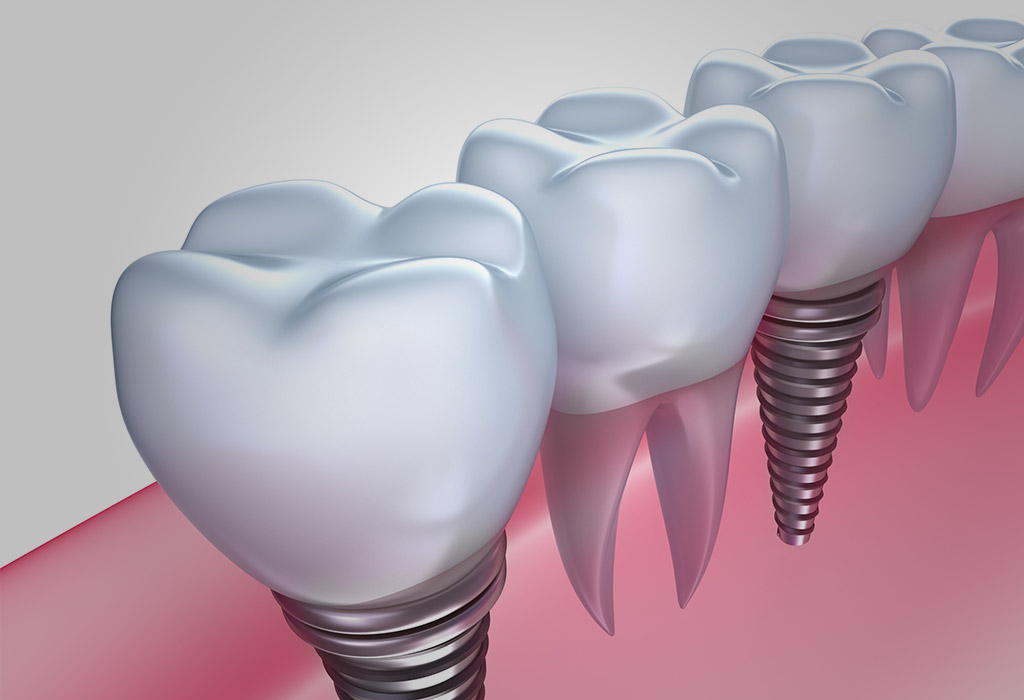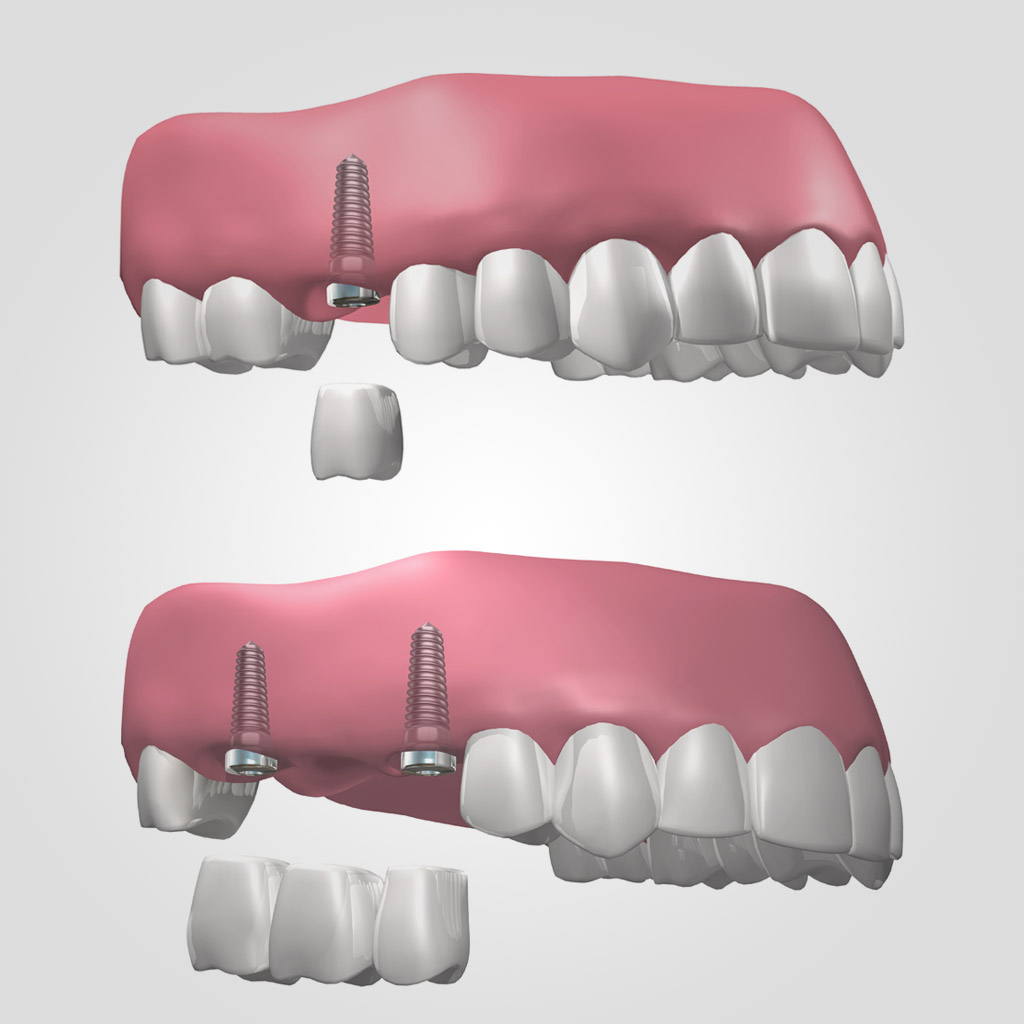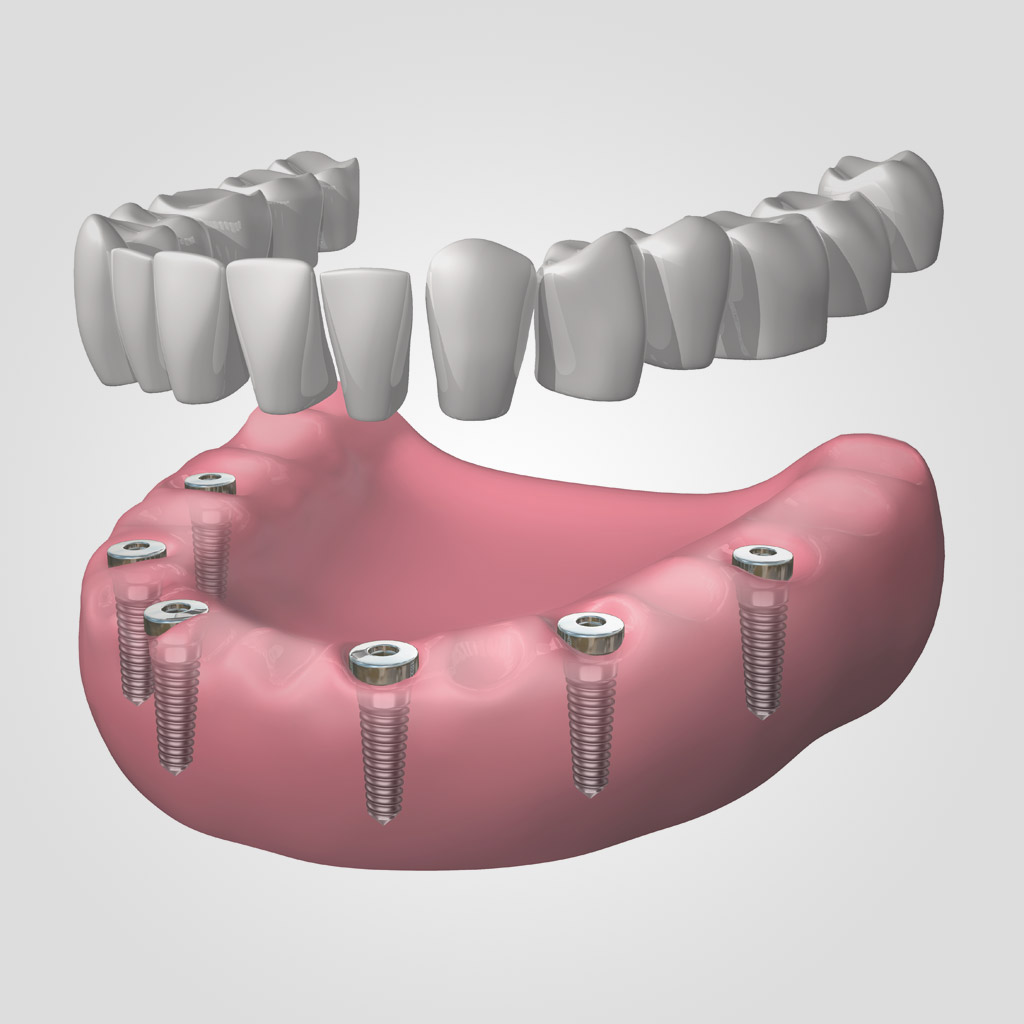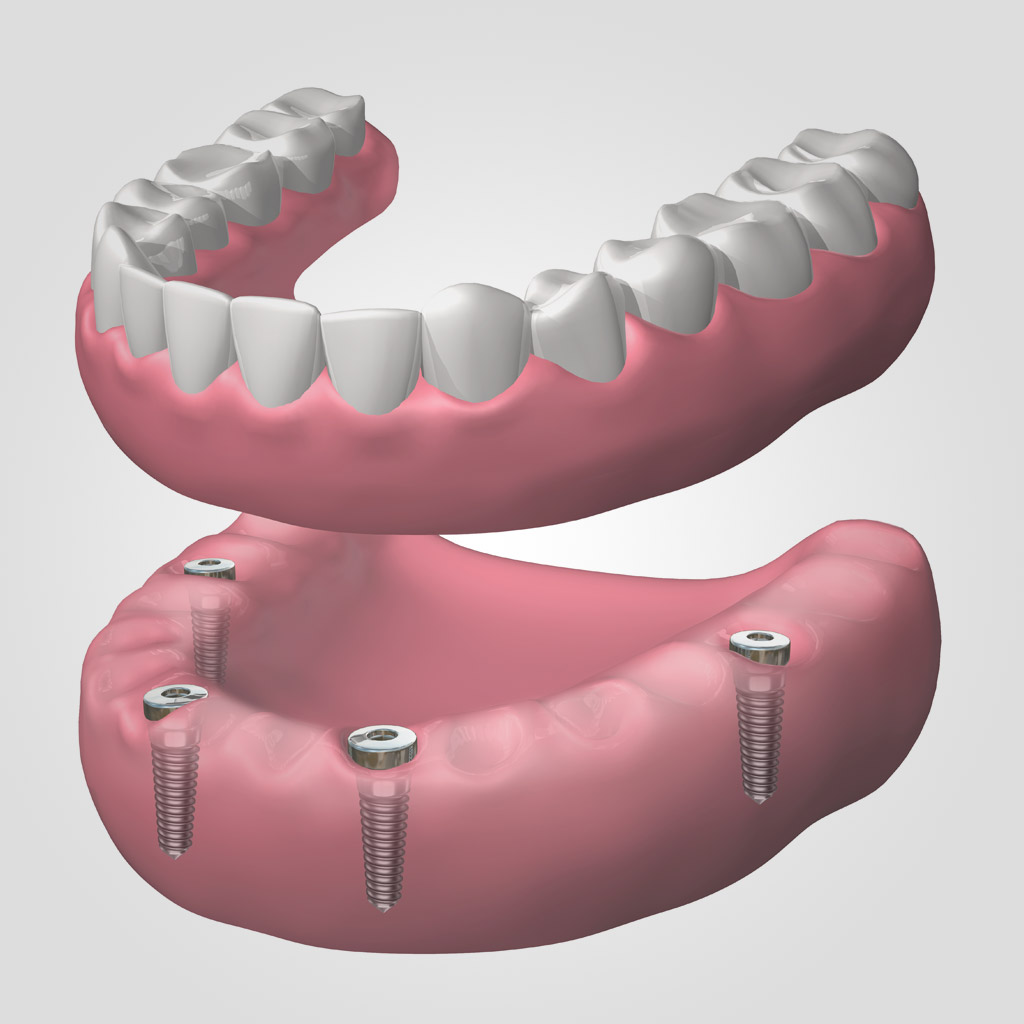Tratamientos
Implantes dentales


Es un producto sanitario destinado a ser el sustituto artificial de la raíz de un diente perdido. Tiene forma roscada y está fabricado con materiales biocompatibles que no producen reacción de rechazo y permiten su unión al hueso.
Al reponer los dientes perdidos por medio de implantes se conserva mayor cantidad de hueso ya que este se reabsorbe al no recibir ningún tipo de estímulo y evita pérdida maxilar.
Componentes
- Body. Portion of the dental implant that is designed to be inserted into the bone to anchor the prosthetic components, usually screw-like.
- Cover screw. After inserting the implant body into the bone during the first surgical stage, a cover is placed over the ridge module in order to prevent tissue growth inside the thread.
- Healing abutment. After osseointegration has occurred, a second surgical step is performed, the cover screw is unscrewed and removed and the healing abutment is screwed in.
- Pilar. It is the portion of the implant that holds the prosthesis.
Materiales
Titanio
Es el más empleado para implantes, por su alta estabilidad química y buenas propiedades de biocompatibilidad. Soporta elevadas cargas oclusales y permite la osteointegración del implante.
Materiales cerámicos
Existen implantes fabricados completamente con materiales cerámicos, implantes zirconio. Poseen gran potencial para ser usado en la odontología moderna.
Permiten una integración más rápida y fuerte que la producida con el titanio, ya que la unión no es mecánica, sino supuestamente química dando lugar a la biointegración.
Implantes
individuales

Prótesis fija con 6 implantes

Prótesis removible con 4 implantes

Prótesis híbrida con 4 implantes



